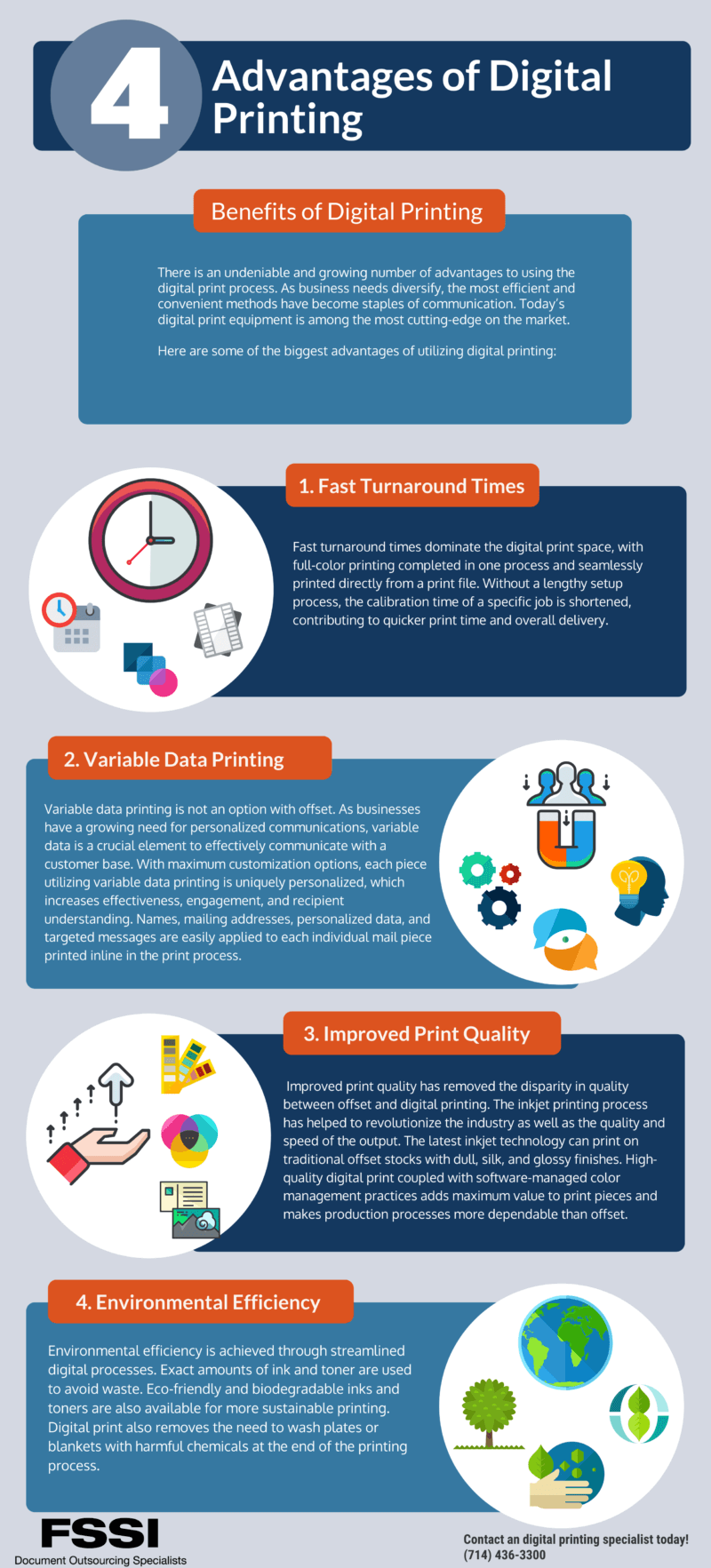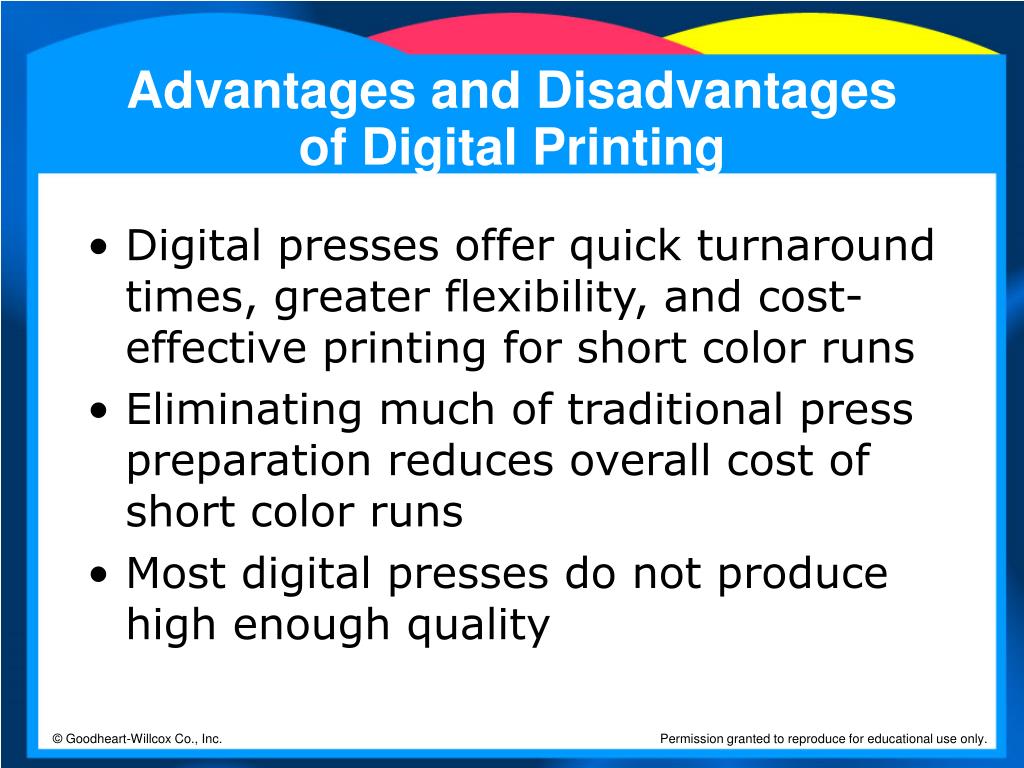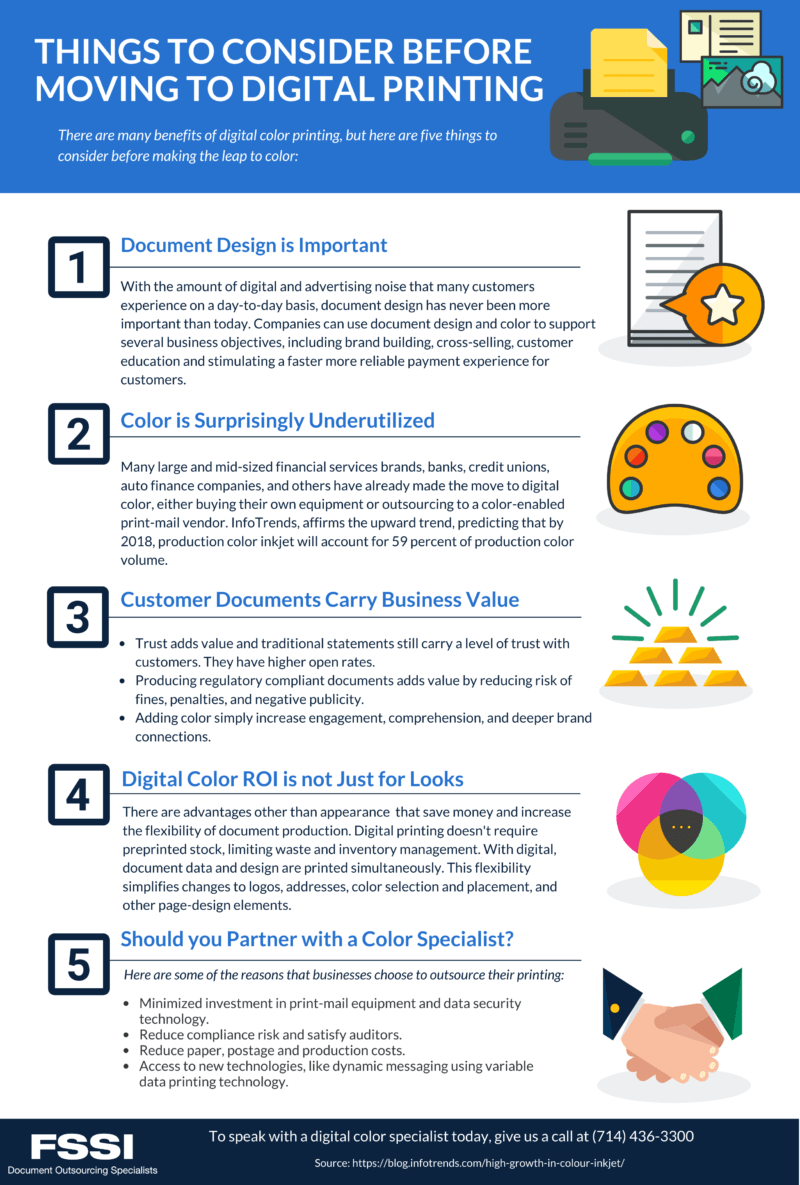Some Of Digital Printing
Some Of Digital Printing
Blog Article
What Does Digital Printing Do?
Table of ContentsThe smart Trick of Digital Printing That Nobody is Talking AboutDigital Printing for DummiesDigital Printing - QuestionsThe Ultimate Guide To Digital PrintingDigital Printing Fundamentals ExplainedExamine This Report about Digital PrintingNot known Facts About Digital Printing
According to PMMI, electronic printing permits brand names and makers to respond rapidly to client demands while boosting the supply chain, lowering warehousing expense and waste, and taking pleasure in faster time to market. That all noises fantastic, yet how does this innovation do all that? The major differentiator of these innovations is that there are no set up charges and no plates with digital printing.According to Wikipedia, the biggest distinction between electronic printing and standard approaches such as lithography, flexography, gravure, or letterpress is that there is no requirement to change printing plates in electronic printing, whereas in these analog printing techniques home plates are continuously changed. This results in quicker turn-around time and lowers price when making use of digital printing.

Digital Printing - Questions
With conventional printing methods, short-run printing is just not possible. Since a great design can make or damage your product, digital printing consistently produces high-quality, clear and vivid graphics each time.
Digital printing is the process of printing digital-based images straight onto a variety of media substrates. There is no need for a printing plate, unlike with balanced out printing. Digital documents such as PDFs or desktop computer publishing files can be sent out directly to the digital printing press to print on paper, image paper, canvas, textile, synthetics, cardstock and various other substratums.
Digital printing is faster and efficient in more detail, two reasons it's often utilized to publish product packaging, direct advertising leaflets, and books or publications. A lot of digital printing machine have actually traditionally made use of toner-based technology and as that innovation quickly advanced, the print quality matched that of balanced out presses. In the last few years, inkjet technology has streamlined electronic print ease of access along with the price, rate and quality challenges encountering print companies today.
9 Easy Facts About Digital Printing Shown
Countered printing is the ideal solution when you require and/or adaptable colour, paper and sizing options. Digital Printing. Digital printing is optimal for jobs, generally less than 2,000 copies, and when you need a fast turnaround. If you are not certain what's ideal for your project, we will work with you to pick the print method best matched to your task and budget.
The precise color matching and adaptability it supplies make it tough to ignore. Digital printing enables quick and economical manufacturing without jeopardizing top quality, unlike balanced out printing. It makes it possible for smaller print runs and on-demand manufacturing, making it excellent for businesses of all dimensions. Moreover, electronic printing, with its excellent shade accuracy and consistency, is a game-changer in the industry.
While both have their values, there are numerous crucial distinctions that set them apart. Understanding these distinctions can help you make an enlightened choice regarding which method is ideal fit for your printing requires. Offset printing has long been the go-to selection for high-volume industrial printing. It entails moving ink from plates to rubber coverings prior to ultimately applying it onto the paper.
Some Known Factual Statements About Digital Printing
One remarkable advantage of countered printing presses is their ability to deal with a vast array of paper dimensions and thicknesses. The balanced out press can fit various materials, including shiny or distinctive papers, supplying adaptability that electronic printers might have a hard time to match. This printing technique counts on the usage of printing plates to move the ink onto the paper, making it a preferred option for top quality prints.
Adjustments may be essential throughout the print run to keep high quality consistency with printing presses. Digital printing, on the other hand, provides an extra structured strategy compared to counter press.

Let's dig right into these advantages and explore exactly how they can benefit organizations. One considerable advantage of electronic printing is the elimination of expensive configuration costs that are related to offset printing. In typical balanced out printing, each work requires the production of plates, which can be expensive and time-consuming. With digital technology, there is no need for plates or find more intricate configuration procedures.
Some Known Details About Digital Printing
An additional cost-saving aspect of electronic printing is the ability to print only what you require. Unlike countered printing, where large amounts should be created to make the procedure economically practical, digital printers use greater versatility. Whether you need a tiny set or a single copy, electronic technology allows on-demand printing without any kind of extra prices.
Using conventional balanced out printing would certainly call for creating a huge quantity upfront to attain an appropriate unit price per flyer. However, by selecting digital printing instead, they can print only the specific number required at a lower overall cost.: An advertising and marketing firm intends to run a direct-mail advertising project targeting different customer segments with individualized pamphlets.
One of the essential advantages of electronic printing for tiny print runs is its. Unlike countered printing, which requires the production of plates and configuration time for each job, electronic printers can begin creating prints practically quickly. This makes them perfect for smaller amounts where time is essential.
Things about Digital Printing
Another advantage of digital printing is its capability to develop individualized marketing products. With, services can easily include customized web content within each printed item.

One of the crucial benefits is the boosted adaptability and customization options that see page come with digital printing. With electronic printing, making modifications to styles or content throughout the manufacturing process is a breeze. Unlike typical countered printing, where making alterations can be time-consuming and costly, digital technology allows for fast and very easy changes.
An additional benefit of electronic printing is its variable information capabilities. Whether you need to personalize each item with private names, addresses, or other distinct sites info, variable data printing makes it possible.
The Ultimate Guide To Digital Printing
Whether you're looking for shiny or matte coatings, distinctive papers, or specialty stocks, digital printers can fit numerous preferences. Digital printing genuinely beams.
Report this page